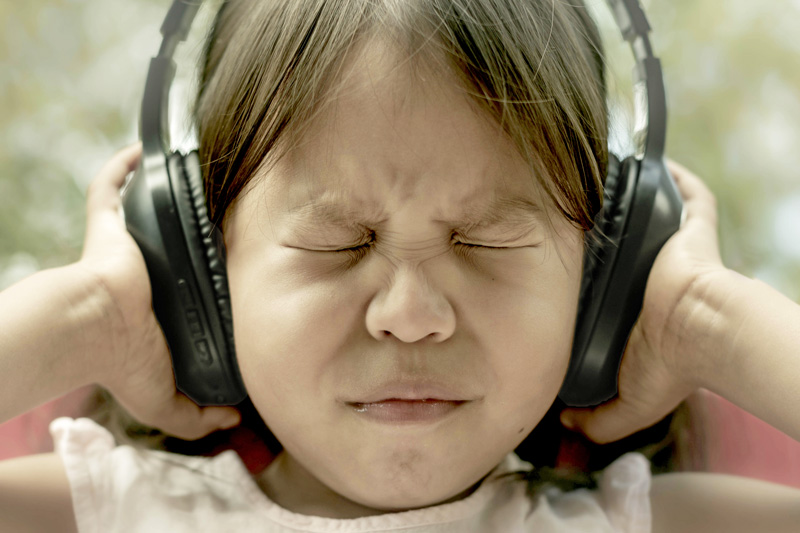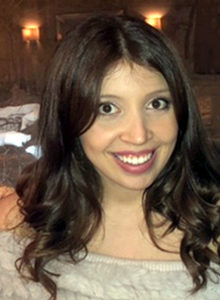As someone who not only is earning their doctorate in the field of literacy education but was diagnosed at the tender age of two with pervasive developmental disorder (PDD), a category found among autism spectrum disorders (ASD) along with a list of additional sub-diagnoses, it’s safe to say that not all individuals with autism have the same characteristics. Regardless of an individual’s age, there are some very common sub-diagnoses linked to autism. One of those diagnoses being sensory processing disorder (SPD). The ability for an individual to take in, organize and make sense of different kinds of sensations received by the brain involves the use of sensory processing (Schoen et al., 2009). However, SPD impairs one’s ability to process these different types of sensations. What most people don’t realize is that rates of SPD can be as high as 90% among those with autism (Schoen et al., 2009). It doesn’t take a rocket scientist to recognize how impactful SPD can be on the daily occurrences of navigating life for an individual with autism.

A very common, primary sub-type of SPD that individuals with autism possess is sensory modulation disorder (SMD), which can be described as having difficulty regulating one’s responses (i.e., duration, intensity, and/or type of response) in a flexible and adaptive manner to sensory experiences that occur in daily life (Schoen et al., 2009). Now, I must admit, over twenty years ago when I was formally diagnosed with PDD (eventually becoming inattentive ADHD, my current diagnosis), I was unaware of my own SPD until recently when I myself experienced sensory overload. Once realizing I had SPD after experiencing first-hand sensory overload, I researched the different types of SPD in order to correctly identify mine so I could find a remedy that could best fit my needs. Therefore, the purpose of this article is to shed light on SPD among individuals with autism and discuss different options that will either prevent the occurrence of sensory overload or serve as an anecdote. Since discovering triggers and remedies for SPD, my life has improved drastically. For that reason, I hope this information can bring as much comfort to you as it has brought to me.
A few of the most common forms of SPD include but are not limited to the following: visual processing, auditory processing, tactile processing, and multisensory processing (Proff et al., 2022). In quite a few cases, mine included, a person can possess more than one form of SPD. However, there may be some forms of SPD that are more sensitive than others. For example, I myself have visual, auditory, and tactile SPD. Amongst those three, my auditory SPD is by far the most challenging form of sensory processing. Granted, this could also be due to the fact that my initial diagnosis included an auditory processing delay, but history has shown me that whatever the reasoning is, my auditory processing skills are the most difficult for me to navigate. I know what you’re thinking, “How do you know your SPD is being triggered?” I’ll admit that to this very day, I’m still learning what can trigger my SPD, because life brings about new circumstances that requires us to use these different forms of sensory processing, bringing about new sensory triggers.
The first memory I can recall in going into sensory overload was on my kindergarten fieldtrip to the planetarium where they had a space show presented similarly to an IMAX movie theater with extremely amplified speakers and blasting spaceship noises throughout the entire show with different light patterns. Thankfully, my mother insisted on joining the fieldtrip and noticed how I tensed up, shook from nerves, then went into sensory overload all within the first ten seconds of the show. It was then that my mother saw my anxiety-ridden reaction to sensory overload, quickly removing me from the theater to step outside and begin the process of sensory decompression.
Another common tell-tale sign that an individual with autism is experiencing sensory overload due to their SPD can be indicated if the individual is exhibiting restricted and repetitive behaviors (RRBs), often related to increase in arousal levels (Leekam et al., 2011). A class of behaviors including high frequency, repetition in a constant manner, and strong desire for sameness in the environment are formed from RRBs (Leekam et al., 2011). Restrictedness is seen in the narrowness of focus, inflexibility and preservation in interests, activities, and insistence that aspects of the environment stay the same (Leekam et al., 2011). Repetition is shown in rhythmic motor stereotypies, repetitive speech routines, and rituals (Leekam et al., 2011). With that being said, there are some practices that can certainly help one regroup from experiencing sensory overload, awareness is key.
Though this may be easier said than done, the #1 recommendation for those who experience sensory overload is to remove yourself from the environment and find a quiet, calm space to regroup, allowing for cognitive processing abilities to decompress from the overload. It’s vital for those who have SPD to know this is not their fault but rather how their brain is wired. Studies have literally shown that neurodivergent individuals, including those with autism, have atypical sensory perception in comparison to those who are neurotypical (Proff et al., 2022). Additionally, functional MRI studies have revealed that frontal brain areas play a major role in sensory processing sensitivity, serving as yet another reminder that SPD is neurological and not optional (Schredl et al., 2022). Furthermore, sensory hyper/hypo sensitivity can be linked to both cognitive and visuomotor control challenges among those with ASD (Brandes-Aitken et al., 2018).
When discussing different forms of SPD, it should also be noted that certain cases of sensory overload can be more mild than other cases. For example, it’s common among those who have visual SPD to prefer dimmed lighting or feel discomfort by fluorescent lights. Another tool that can help address and assess which forms of SPD you have or what may trigger your SPD is by keeping a journal. There is something to be said for tracking different forms of processing and noticing how you react to different sensory experiences. Many do not realize a big component of SPD is experiencing high sensory processing sensitivity, which involves increased depth of processing, awareness of subtleties, high emotional reactivity, and ease of overstimulation (Schredl et al., 2022). Therefore, it’s important to be mindful of SPD, how one feels when experiencing sensory overload, and what caused this trigger when journaling.
The last piece of advice recommended to help navigate SPD is by taking note of sensory pleasures. Though this may not be a term you would blurt out at the dinner table, it’s just as paramount when discussing SPD. If sensory overload is caused by triggers of SPD, we can also encounter forms of sensory processing that give us pleasure. For example, I love the way a hot bath feels on my body. This sensory pleasure redirects my attention, helping me regroup from sensory overload. It’s recommended to have a trial-and-error period by journaling which activities give sensory pleasure and not sensory overload! Whether trying to identify sensory triggers or sensory pleasures, the most crucial component of this process is to write everything down to reflect on the information gathered about your SPD while noting the progress made overtime.
I know first-hand being neurodivergent, and having had ASD myself, can be challenging. However, I hope this information can provide you with a solid start on how to identify your own SPD while making it easier to navigate. I believe in you my gifted, neurodivergent readers!
Claudia Rose Addeo was hand-picked to receive the 2020 “Top Young Writer Award” from Autism Parenting Magazine! Claudia is currently a doctoral student, certified elementary school teacher, neurodiverse advocate, and is in the process of publishing her first children’s book! Having earned a master’s degree in literacy education, Claudia writes and speaks about her personal journey, sharing additional information through her social media platforms. You can follow her on Instagram @claudia.addeo, Twitter @claudiaaddeo, Facebook claudia.addeo, or visit her website for additional contact information at www.claudiaaddeo.com.
References
Brandes-Aitken, A., Anguera, J. A., Rolle, C. E., Desai, S. S., Demopoulos, C., Skinner, S. N., Gazzaley, A., & Marco, E. J. (2018). Characterizing cognitive and visuomotor control in children with sensory processing dysfunction and autism spectrum disorders. Neuropsychology, 32(2), 148–160. https://doi.org/10.1037/neu0000404
Leekam, S. R., Prior, M. R., & Uljarevic, M. (2011). Restricted and repetitive behaviors in autism spectrum disorders: A review of research in the last decade. Psychological Bulletin, 137(4), 562–593. https://doi.org/10.1037/a0023341
Proff, I., Williams, G. L., Quadt, L., & Garfinkel, S. N. (2022). Sensory processing in autism across exteroceptive and interoceptive domains. Psychology & Neuroscience, 15(2), 105–130. https://doi.org/10.1037/pne0000262
Schoen, S. A. (2009). Physiological and behavioral differences in sensory processing: A comparison of children with Autism Spectrum Disorder and Sensory Processing Disorder. Frontiers in Integrative Neuroscience, 3. https://doi.org/10.3389/neuro.07.029.2009
Schredl, M., Blamo, A. E., Ehrenfeld, F., & Olivier, P. S. (2022). Dream recall frequency and sensory-processing sensitivity. Dreaming, 32(1), 15–22. https://doi.org/10.1037/drm0000185





